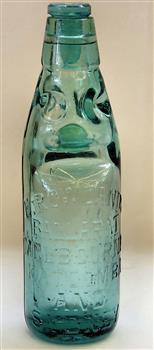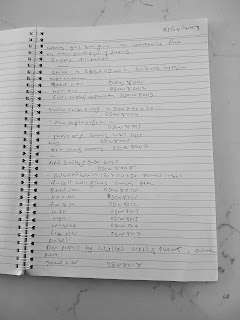A long time ago, just before last Christmas in fact, I had
an email from NBNco saying that we could have an upgrade
to a pure fibre optic connection, rather than our current FTTC connection.
The only problem was that our current ISP wasn’t part of the
upgrade scheme.
I emailed them and asked them if they were going to
participate. Naturally, they said yes, and even emailed me a link to an online
form to register my interest.
Several months went by, during which time our FTTC
connection started having more frequent minor dropouts, culminating in a
complete failure one Sunday morning.
I phoned our ISP, who did some tests, agreed the link was
dead, and said that they would refer it to NBNco as it looked like
infrastructure.
In the meantime our link started working, but nevertheless,
a couple of days later we had three NBN trucks outside our house. They poked,
they fiddled, they repatched our connection, and it did seem to work better,
but we were still getting short duration dropouts.
Clearly our current ISP, iiNet, wasn’t coming to the party,
so it was time to change ISPs.
Now, we live in a rural area. While there’s a whole lot of participating
ISPs listed on the fibre upgrade website, most of the smaller ones don’t have
much of a presence outside of the cities, and will understandably use
subcontractors to do all their installation and configuration work.
I’m personally very conservative about infrastructure. Of
the three players with a significant local presence, only Telstra has boots on
the ground.
So, while it’s more expensive, Telstra seemed to be the
logical choice.
So, I contacted them.
You would think it would be a simple thing to change ISPs.
Not with Telstra.
Despite the fact I already have a mobile phone account with
them (the joys of rural life) I had to go through Passport, Drivers Licence,
credit and income checks.
Then, they found they couldn’t actually order a fibre optic
upgrade without me being an established customer, so the solution was that we
change to Telstra, and I then request an upgrade, which apparently you can do
once every billing cycle – or month as we normally call them.
All in all, it took over two hours to actually sign up with
them
Telstra insisted on supplying me with their own modem rather
than have me simply reconfigure our existing device.
Now we have been having some very wet
weather recently, and I was understandably concerned that it would be
delivered and left out in the weather.
They assured me that they would use StarTrack to deliver the
unit, and that it would be taken to the post office if there was no one home to
sign for it. That didn’t quite go as planned – only when I got a text message
from Telstra saying the unit had been delivered did I discover that StarTrack
had left it on the mat.
The other problem about changing ISPs is that we have
FetchTV service through iiNet.
We wanted to keep our Fetch service, and I needed to find
out if we could migrate it successfully.
No one at Telstra knew, and they only wanted to sell us some
expensive monolithic FoxTel subscription.
iiNet clearly wasn’t going to tell us, and FetchTV’s own
website was singularly unhelpful.
I eventually found a technical support email for Fetch, so I
contacted them and asked the question. A very helpful person at Fetch asked me
to email them the box serial number, which brought the bad news that it was
locked to iiNet, and we would need a new box, which given that the unit is five
years old is not a drama. We of course need to configure the box before we can
get new subscriptions, and before then we need to get our Telstra link working.
As luck would have it was Judi’s birthday that week, and
we’d arranged to go to Melbourne for a couple of nights to see the
Paul Bonnard exhibition and have dinner out in the city, and she had to
moderate a Zoom conference when we got back, so no way was I going to do any
installation work until after that was done.
I had told Telstra this at the time of ordering, but of
course I got a scad of no-reply text messages asking why I hadn’t plugged the
Telstra modem in yet.
I decided that the best thing to do was ignore them unless I
got an email or call I could reply to.
Telstra ignored all of this and remotely reconfigured our
existing modem, which was not a problem, it meant we had working internet when
we came home.
Disconnecting the old modem and plugging in our new Telstra
modem took all of five minutes – in fact the modem took longer to boot than it
took to swap over.
It was then a case of swapping out our old locked to iiNet
fetch box. Again the physical swap took less than five minutes followed by twenty minutes sat on the lounge room
floor with a laptop registering with Fetch and getting various magic activation
codes.
In fact the longest part of the exercise was waiting for the
box to run various firmware and software upgrades.
We then left things for twenty four hours to make sure that
our connection was stable (it was) and then called the number Telstra had given
me to call to request an FTTP upgrade.
It was a Saturday, and the call centre that dealt with FTTP
upgrades was closed.
However, there’s always an alternative route with Telstra –
I used the technical support chat service they provide to ask if they could
process an upgrade request.
They could, and after twenty minutes or so of confirming
details and agreeing that Telstra could seize and resell various body parts if
we did not follow through we had a fibre upgrade request.
In fact, I need to compliment Telstra on their officiousness
and thoroughness, they checked about home alarms, medical equipment monitors,
if we had a panic alarm, warned us that things might be disconnected and not
work during the upgrade process. They even asked if we needed (for a price) a
technician to help swap cables. Totally unnecessary, but I can imagine various
elderly relatives who might benefit from a service like that.
At the end of it I had a job reference number and we were
set.
Apparently, someone from Telstra will call me later in the
week to get things scheduled, they say it will take six to eight weeks, but
living in a rural area I know that the timescales can be different from those
stated, and if they have a crew in the area they might piggy back our job onto one
they scheduled earlier.
Here’s hoping …



















